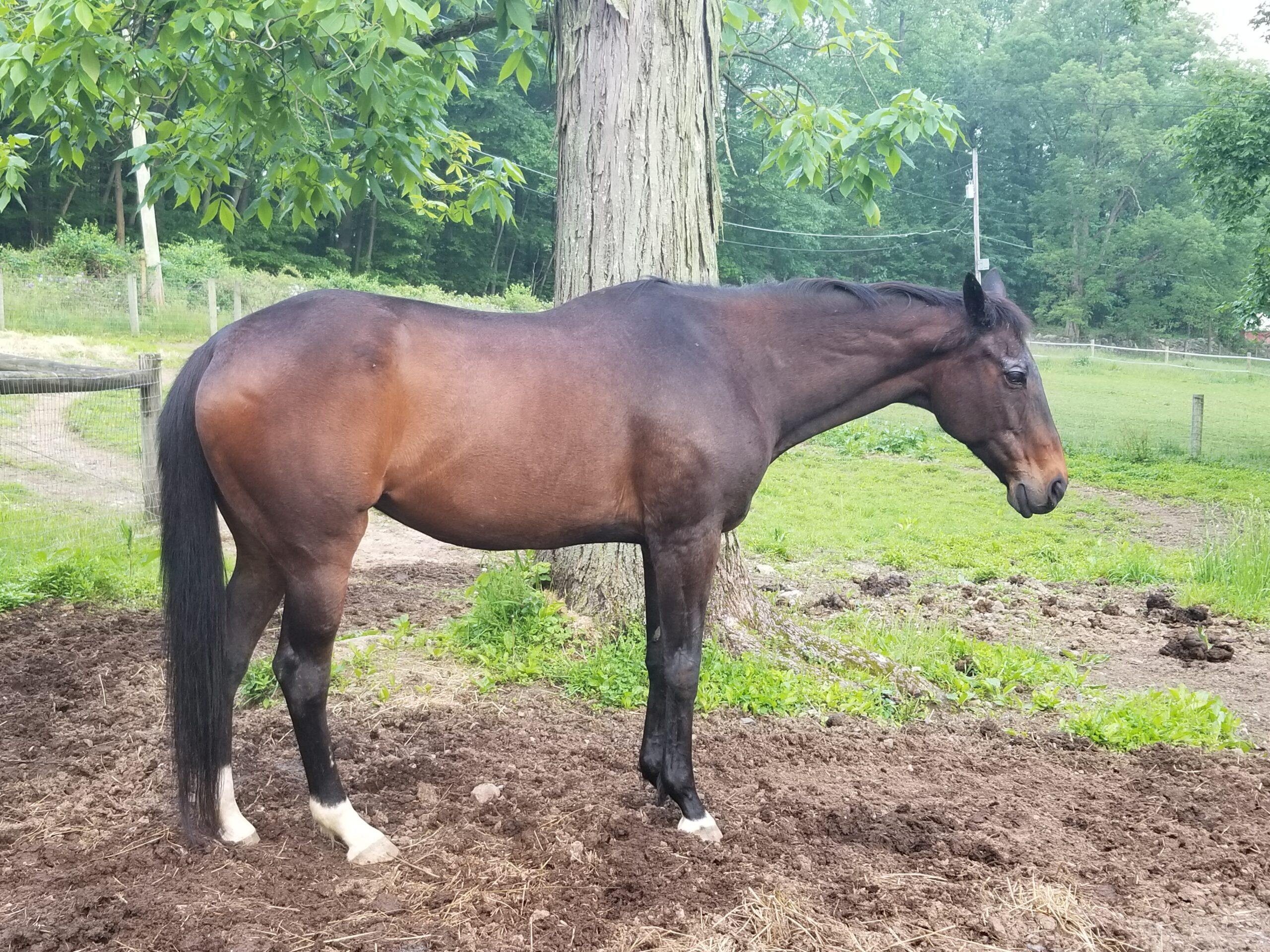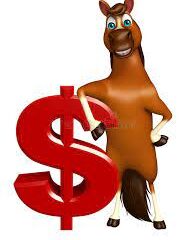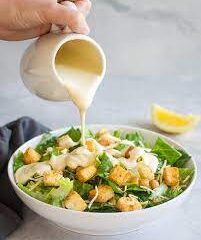Feeding the “Hard Keeper”

The primary reason I started “Jim the Feed Guy” is that in every horse group I was a member of there were many people asking for help to add weight to a “hard keeper”. In less than ten minutes there were 326 comments all advocating throwing more fat and calories at the horse. Dozens of people proclaiming “miracles” seen from their favorite fat supplement and all of this before asking a single question about the horse like age, condition, workload, etc.
The single largest class of horse I’m asked to help with are “hard keepers”. Personally, I will trade my “easy keepers” for “hard keepers” any day because it’s much easier to maintain weight on a horse than to lose weight when it is done properly.
I have three typical AQH mares that I struggle with to keep at a lower healthy weight. My other horse is an OTTB that is easy to maintain weight.
There Are No Hard Keepers Only Broken Horses
Let’s get this out of the way up front. There are no “hard keepers”. The NRC puts the daily caloric requirement for an average 1,100 pound horse in little or no work at around 14,000 per day. If that horse is eating 20 pounds of quality grass hay at 800 calories per pound they should easily maintain their weight providing everything is working properly.
Before everyone gets hysterical, all horses are individuals and certain breeds absolutely trend to the heavier side or lighter side. There is no question that the average thoroughbred is going to require more calories to maintain weight than the average Quarter Horse. Flair the Mare easily maintains weight on 20 pounds of orchard grass hay daily while Raven the OTTB needs a few pounds of concentrated feed to maintain her 6 BCS.
The problem is that typically when I am called in to help with a hard keeper they are being stuffed with 30,000 to 40,000 calories per day between high octane feed, fat supplements and oil. Given that the average horse requires 14,000 calories per day to maintain weight BUT an individual like Raven requires 16,000 calories per day to maintain weight I don’t see that as a problem. However, when a horse is getting three to four times the calories required and still not gaining or maintaining weight THE HORSE IS BROKEN and needs to be fixed before you make things worse.
It All Starts With the Teeth
Nature designed horses to eat grass and other plant material in order to thrive. No equine diet will work unless the proper amount of fiber is introduced into the hindgut of the animal and best source of this fiber is high quality forage from pasture or hay.
In order to maintain weight horses must process forage which can’t be processed if it hasn’t been properly chewed. Without healthy bearing surfaces the horse is unable to grind forage finely enough to be processed by the 120 feet of equine digestive system behind them.
When dealing with a new horse, particularly a rescue, it is essential to get a qualified equine dentist in to float teeth. If you have rescued a malnourished horse with a questionable background it’s teeth need to be cared for and it will probably require a couple of sessions to get them right. The dentist is the last specialist called when money runs tight.
Sometimes the dentition of the animal is too far gone to ever support properly grinding forage and we must look to forage replacements in the form of soaked cubes or pellets.
When we have a good assessment of dentition we know how to proceed with forage selection.
Fecal Samples
A heavy parasite load will have a debilitating effect on weight gain and general health of the horse. If you haven’t had a fecal exam in the last three months it’s time for another check.
Don’t just hit the horse with wormer and hope for the best. We are already dealing with “wonder worms” that are resistant to medication, please don’t contribute to the problem. If it’s determined that there is a high parasite load then treat accordingly.
Look to the Gut
The last and most important block to check is the entire digestive system which may not be as hard as it sounds since the whole thing is pretty simple if we don’t complicate it.
The horse has evolved to process grass as it’s primary source of energy and it’s a terrible energy source so it requires 120 feet of digestive tract to extract the energy required to sustain a horse.
I’ll save the details of the digestive system for other posts but for now we’ll focus on the hindgut which is where all the weight gain happens in horses and the biggest reason most horses won’t gain weight.
Digestion in most animals involves bugs of some kind to help breakdown the material that is consumed. In herbivores like the horse the microbes are critical to proper processing of forage.
This explanation is really oversimplified so for all you eq sciences majors out there I’ll beg your forgiveness.
The forage is softened up by the acid in the stomach before it passes through the small intestine where starch, sugar, proteins and other essential nutrients are processed and absorbed. Fiber, which is the biggest part of forage by volume is sent to the hindgut where it is dumped into the cecum which is a big fermentation vat. If anyone has made wine at home from a kit the cecum works almost exactly the way the fermentation bucket works. Plant material goes in, the bugs eat it and poop out bioavailable nutrients for our horse.
The biggest byproduct of this process are volatile fatty acids. VFAs are the best source of fat and subsequent weight gain for a horse because that’s how it works in their natural environment.
When the hindgut is broken this process doesn’t happen efficiently and our horses don’t thrive. So what breaks the hindgut and how do we fix it?
Sugar and Starch Are the Enemy
If the microbial colonies in the cecum aren’t healthy then there aren’t enough bugs to process the fiber. These microbes are happiest in a low acid environment so once the acid level in the hindgut increases the bugs begin to die. The primary reason for an increase in hindgut acidity is starch and sugar.
The primary source for the starch and sugar overload is concentrated feeds and whole grains. This is the reason the worst thing for an underweight horse is to load it up with large, high calorie, high starch meals. Doing this sets up a cascade of events that end in disaster and in some extreme cases death.
Most people think that OTTBs are ulcer ridden messes because of the stress they are under but the reality is they are stressed by the ulcers and the ulcers are caused by the high starch low forage diets they are on to get the greatest amount of speed from them.
Recent studies show that feeding one pound of NSC per meal will increase the risk of moderate to severe equine gut ulcers by 260%! Most sweet feed and racing formulas are at least 50% NSC so a meal of two pounds is all it takes to create havoc in the horse’s gut. That’s not a very large portion for these horses so when a TB pounds down six pounds of a race formula feed severe ulcers are inevitable.
Large Meals Will Work Against You
It’s instinctive, if it’s skinny feed it! But for our friend the enigmatic horse this philosophy will backfire on you.
As stated above, high volumes of starch will imbalance the hindgut and kill the good fermentation bugs. But that’s not the only consequence of large concentrated meals.
The horse’s digestive system works on a 36 to 48 hour cycle in order to extract the maximum amount of nutrients from forage. Like a factory assembly line there’s only so much room on the conveyor belt so if we overload the filler chute the conveyor must move faster. We call this rate of passage and increasing the rate of passage decreases the amount of time food has available for processing.
When I finally get called in by a frustrated owner the answer to my query of the current feeding program is invariably some version of:
5 pounds of Ultium Competition, 1 pound of Amplify fat supplement, 2 pounds of alfalfa pellets and a cup of rice bran three times a day. That’s 24 pounds of concentrated feed and fat for a horse that should be getting 24 pounds of grass hay. Except “he hates hay, he won’t touch it”.
Of course he’s not going to eat his hay, would you eat your broccoli if you just ate three pizzas?
Fixing the Gut
The first priority is to rebuild the microbial colonies in the cecum and the only way to do that is to neutralize the acid in the system. The best way to begin this process is with forage so it’s imperative to get the teeth in shape as soon as possible.
Equine saliva is the best acid buffer available for them and they only produce saliva when they are chewing. This is why full time hay is so important to horse health.
If the horse is showing symptoms of severe ulcers consult with your vet on a course of action. If a horse isn’t thriving on triple the required calorie load my first guess would be ulcers although there may be other causative conditions. Your vet is the best source for any pharmacological treatments of acute conditions.
Move the horse to a low NSC feed and reduce the volume. We want to keep meals of concentrates to under three pounds. I know the rule of thumb is 5 pounds but I’d prefer some margin for error. Three meals of three pounds is fine. Keep the NSC of the feed under 20% and if it’s not listed on the tag as sugar and starch don’t use that feed. NSC is the value of sugar plus the value of starch.
Adding supplemental probiotics won’t hurt for an underweight horse but the best source of probiotics is forage so it is critical to get them eating as much hay as possible. Some alfalfa is helpful for calories, it’s tasty and the calcium helps to buffer acid.. Good, clean, soft grass hay is great too. These horses need hay in front of their faces at all times.
Introduce a good gut support supplement. My personal favorite is Purina Outlast, this all natural supplement has come through for me time after time.
If the hindgut is responding you should see an increase in hay consumption and a generally better attitude in two weeks or less. They bounce back fairly quickly.
If it’s a horse with poor dentition then you must introduce forage replacements that can be made into a mash. A complete senior feed will work well. Beet pulp is also a favorite of mine. Average protein, high fiber, low NSC is the prescription for a healthy hindgut and that’s beet pulp.
Fat is NOT the Answer
The traditional way of putting weight on a horse was to add fat to it’s diet. Sometimes it actually worked but there are consequences.
In recent years fat has become a good source of controlled energy for horses in certain disciplines that require a steady, regulated source of energy. When supplemental fat is delivered in a well balanced formula in a bioavailable form it fits that role well.
Throwing large quantities of high fat supplements at a horse without anything to balance it with is not the best way to put weight on a horse.
I’m cautious in my use of reference to wild horses because we ask our domesticated breeds to do so many different things but when it comes to digestive health and nutrition working with what nature gave us is the best way to go. Horses in the wild encounter many different sources of forage, some great some not so great. I can tell you one thing with absolute certainty and that is a wild horse has NEVER stumbled on a natural pool of canola oil or any rich source of plant based fat.
It’s because of this that evolution did not deem it necessary for a horse to have a gall bladder to provide a readily available source of bile to handle surges in fat intake. Horses secrete bile through ducts in the liver and don’t store any for “emergencies”.
Horses will adapt to increased fat in their diet but it requires a slow ramp up over ten to 12 weeks and it’s still not the best way to put weight on a skinny horse.
Fat can also mask an underlying problem. If you have a horse that requires a daily portion of a fat supplement to maintain weight there is something wrong.
The best way for horses to have a good, highly bioavailable fat source is to ensure that the system is working and the microbial colonies are breaking down quality amounts of fiber.
Will feeds with a higher fat content help? Yes, because of their formulation and the fact that many high fat feeds are also low NSC.
A Quick Review
So if your horse has been a traditionally hard keeper or if you’re just being introduced to a new horse or rescue here’s a quick checklist:
Vet Check
Dental Check
Parasites
Reduce Feed Volume
Increase Meals
Low Starch
Balance Gut
Forage, forage, forage.
Patience is key. Don’t look to achieve results overnight and fix the weight gain first. Worry about top line and muscle development later. If you try to build muscle while looking for weight gain you’ll be diverting resources.



4 Comments
Elise Hittinger · August 18, 2021 at 7:38 pm
This was wonderful. Thank you for sharing your information. I have a mare that is underweight and we (3 different vets/Dentist/Chiro/Body Worker) have tried everything we can think of. I can make a few changes. She gets 2 pounds Timothy pellets and 2 cups alfalfa pellets soaked twice a day. I tried three times but she won’t eat that much. Teeth are great. The one additional thing with her that nobody has been able to explain is her poop balls are tiny. They are about 3/4 of an inch in diameter but normal size pile, just lots of little balls. Consistency is good from what the vets have said. I am suspecting damage to the hind gut but we have not been able to find anything. She is on 24/7 hay, choice of round bale or square bales and 24/7 wild Kentucky forage pasture. No grain. I just started GutX 45 days ago with zero improvement. Not sure if you have any ideas of what else to try. Would the Platinum Outlast be something to try instead of the GutX?
Jim Fiorini · August 19, 2021 at 8:37 am
This is interesting. I haven’t seen or heard of this manure thing before. Purina Outlast is always worth a try.
Taking the small manure balls I would say that she has something going on in her hindgut. So let’s ignore the manure ball size since it doesn’t seem to be affecting her.
Normally I would recommend Outlast just to see if there’s any change. It sounds like she’s getting plenty of forage which is great. It also means that she is filling up on it and she is maxed out when giving her the pellets.
The problem is calories and fat. Timothy pellets have basically the same nutritional value as grass hay. They are fine to feed in bulk if quality hay is not available but if a horse needs a few extra calories to maintain weight 4 pounds a day of timothy pellets has the same value as providing her with a single extra flake of hay per day.
The alfalfa provides more calories but 4 cups per day is nothing.
The other problem is that she is not getting enough nutrients that the hay is probably missing.
A good concentrated feed will address both the issue of more calories as well as balanced nutrition.
My suggestion would be to find Purina Healthy Edge and replace her timothy and alfalfa pellets with the same amount of Healthy Edge.
Healthy edge is an excellent low starch, moderate fat feed that is easy on the gut and doesn’t provide a whole lot of excess energy.
I would ease her into the feed starting with a half pound AM and PM and increasing a half pound every three days until you get up to two pounds AM and PM. This is a minimal amount of concentrated feed.
Healthy Edge is not “grain” it is mostly beet pulp based and is a refined and well researched feed.
Michelle Smith · August 22, 2022 at 12:03 pm
This was very eye opening. I have a race horse, that I raced, but took off the track due to his declining condition. Treated his ulcers, floated teeth, wormed, fecal, tons of blood work, etc. Vet finally said nothing wrong with him. So I just kept increasing the feed and supplements until I was giving: 5# tribute senior sport (choose because of probiotic support and low NSC), 1 scoop platinum performance (to supplement vitamins, minerals, gut), then I added 1# Finish K for more calories and 3 pumps Dac Oil (because I was told I needed more fat), then 1 cup Outlast because I was still concerned about his gut health) … this regimen twice a day. And to this there is 24 7 access to alfalfa grass hay and a poorer quality pasture. And I was getting No Where. Still skinny, cutting his poor hips up banging his bones in things, and his attitude was downright dangerous.
I’ve backed way off quantity over the past few weeks, but still not sure I’m giving the best overall feed, or if I’m still feeding too much. I tried to go to just hay but he deteriorated very quickly. The feeds I see recommended in the forums are not available here (I’m in the Quad cities, Illinois)
Jim Fiorini · August 22, 2022 at 1:21 pm
Hi Michelle!
You had been really overwhelming his system with all the feed and fat.
I would change everything.
Full time alfalfa isn’t helping things. It is a very nutritionally unbalanced forage. He will do much better on just plain old grass hay if that’s possible.
Forget about the probiotics in his feed, they aren’t helping much.
I would change his feed to any one of these that are easy for you to find. I’m listing them in order of preference.
Purina Senior Active
ProElite Senior
ProForce Senior
All should be available since you are in a big metro area.
I would start him at 6 pounds per day in two three pound meals. If you can manage it I would feed him a third meal at lunch or bedtime as long as there’s at least three hours between meals.
If you’re on facebook you can join my discussion group for help or you can schedule a call with me for $50.